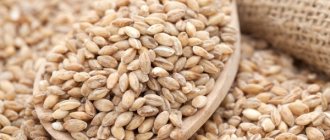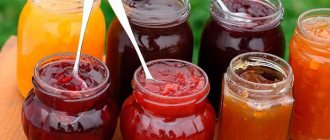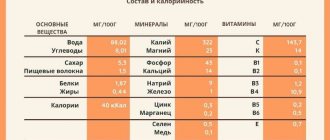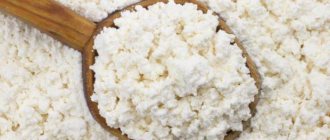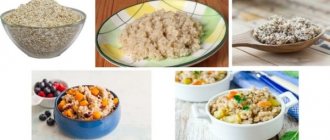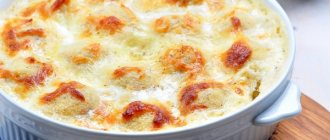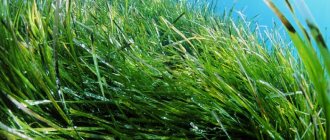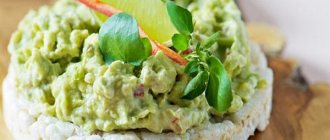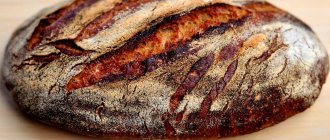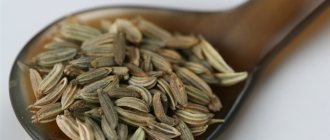Calorie content of honey: how many calories are in a spoon How many calories are in a spoon of honey, what is the calorie content in 1 teaspoon or tablespoon; when consuming it, calories are burned or fat is accumulated - for those people who are watching their figure, the question of the calorie content of this sweetener is very relevant. The calorie content of honey per 100 grams ranges from 300 to 450 Kcal, depending on the variety.
This is a natural product produced by bees, which collect nectar from honey flowers and process the resulting cane sugar with saliva in their crop. This mixture is then separated into honeycombs for further maturation into the final product.
How much does honey weigh?
Honey comes in different consistencies and thicknesses. For example, a thick product that has already been candied will weigh less than liquid nectar.
Adds weight and moisture contained in the treat:
- collected in dry summer, in the absence of precipitation, it contains less than 15%! in (MISSING) lag;
- in the rainy season the amount of moisture will increase to 25%! and (MISSING) higher.
Humidity also depends on the variety:
- honeydew is drier and thicker, it contains more natural glue than water. This variety is the earliest to be candied;
- a liquid variety that is rarely seen candied because it contains a lot of water is the acacia product.
The average moisture content is 18%!/(MISSING)100 g of product.
Also find out what vitamins are contained in honey.
In one glass
The weight will depend on the thickness of the walls of the glass: the thinner the walls, the greater the volume and, accordingly, the weight. For example:
- a faceted glass holds up to 250 g;
- thin-walled of the same shape and size up to 330 g.
In one jar
Each product has its own specific gravity; one liter of a quality product weighs approximately 1.44 kg. For ease of calculation when converting liters to kilograms, this figure should be rounded to 1.5 kg. In order to convert one measure of weight to another, you need to multiply the desired volume by 1.5.
Based on the data obtained, it is easy to make calculations presented for convenience in the table:
| Can volume in liters | Honey weight in kg |
| 0,5 | 0,75 |
| 0,75 | 1,125 |
| 1,0 | 1,5 |
| 1,5 | 2,25 |
| 2,0 | 3 |
| 3,0 | 4,5 |
Nutrients and general benefits of honey
Obviously, everyone has heard about how useful honey is, but not many have managed to figure out what the beneficial properties of honey are and what miraculous components make it so useful. 100 grams of honey contains:
- B vitamins, most of all B6 – 0.10 mg (5% of the daily value of an adult);
- calcium – 14.00 mg;
- magnesium – 3.00 mg;
- sodium – 10.00 mg;
- phosphorus – 18.00 mg;
- iron – 0.80 mg.
Since ancient times, it has been known that honey has the following effect on human health:
- antifungal, antiviral and antibacterial;
- relieves pain from burns and wounds;
- allows you to increase performance, affecting both muscle tone and brain activity;
- improves blood quality by affecting the amount of free radicals;
- improves digestion, gastric secretion;
- improves immunity and body resistance to high humidity or low temperatures.
And, of course, due to the fact that honey is saturated with carbohydrates, its consumption significantly improves strength and mood. These are the same sweets that contribute to the production of a hormone in the body such as serotonin, which in turn allows a person to feel happy.
What does it depend on
Discussions about the nutritional value of honey and how many calories are in honey have been going on for a long time. The value is still heterogeneous; it has a certain dependence on a number of factors:
- Geography, place where bees collected honey
- Honey plant, the quality of its nectar
- Weather conditions in which the collection was carried out
- Climate
- Presence of other plants
- The structure of the soil where honey plants grow.
When collecting honey, it is necessary to take into account all factors that influence the quality of the product; the nutritional value is affected by the time of year and weather. It should be remembered that the less water in honey, the more carbohydrates it contains.
Composition and ratio of BJU
Information about its energy value will help to accurately determine the calorie content of natural bee honey. This is an indicator that reflects the amount of energy entering the body when consuming certain foods.
Note: The energy value of this beekeeping product per 100 grams is 1272 kJ. If we talk about how many calories are contained in nectar for every 100 grams, then this figure will be 304 kcal.
We can conclude that the calorie content of the bee product is quite high, and in terms of this indicator it is even ahead of such nutritious products as beef, pork, milk or chicken eggs. For this reason, it is recommended to be consumed before intense physical activity or during rehabilitation therapy after injury, surgery or serious illness (Figure 2).
Figure 2. Content of proteins, fats and carbohydrates in a natural product
The nutritional value of the product should also be mentioned separately. In fact, this is the composition of a substance that includes not only proteins, fats and carbohydrates, but also other components.
One hundred grams of bee nectar contains 18 grams of water, 0.8 g of proteins, 80 grams of carbohydrates, 1.5 g of organic acids, 5.5 grams of starch, and the remaining amount is micro- and macroelements (calcium, magnesium, zinc, iodine etc.), vitamins, phytoncides, flavonoids and natural hormones. There are no fats in this completely natural product.
How many calories does bee honey have?
Calories are small and harmful creatures that can ruin the life, mood and self-esteem of any woman. Undoubtedly, in order to maintain a figure in good shape, you need to tirelessly monitor your diet. Let's figure out what is best to eat during a diet if you want something sweet?
Depending on the variety, the energy value of the bee product also differs. It's no secret that the calorie content of honey is in no way inferior to bread, condensed milk, beluga and beef.
Calorie content: 320 kcal; Fat: 0 g; Carbohydrates: 80.2 g; Proteins: 0.4 g.
The linden variety, as well as other flower species: sunflower, buckwheat, etc., contain no more than 380 Kcal per 100 grams, but the dark and tart meadow varieties have higher values, which can reach 415 Kcal. Despite the fact that the calorie content is simply off the charts, do not forget that all of it relates to the glucose contained as a result of the work of little bees, and not to sugar.
In 1 tsp.
One teaspoon can hold up to 8 grams of nectar. This amount of substance will contain 30 Kcal. There will be slightly more calories in a tablespoon than in a teaspoon, because it is larger in volume!
In Art. l.
A tablespoon can hold as much as 17 grams of bee nectar. According to rough estimates, the calorie content in this cutlery is 56 Kcal.
In 100 gr.
As we have already said, 100 grams of bee products can contain from 350 to 420 Kcal. This directly depends on the chosen variety of medicinal delicacy.
Linden honey
Linden liquid honey is considered a very high-quality sweet with a viscous consistency and a very light color. The sweet taste is diluted and distinguished from other types by a slight bitterness. The beekeeping product has a very pleasant aroma. Linden flowers give the finished beekeeping product antimicrobial, antibacterial properties, and an expectorant effect.
Video
Among the useful properties:
- laxative effect;
- strengthening the heart;
- beekeeping product is actively used in cosmetology.
The calorie content of the variety is quite low - 26 kcal in a teaspoon, 56 in a tablespoon.
Where are there more calories - in sugar or honey: comparison of the calorie content of honey and sugar
It is known that honey has a fairly high sweetness. And many are interested in the question, what is more nutritious – honey or regular sugar? Both products compared contain fructose and glucose.
But sweetness is provided by different components:
- sugar - sucrose
- bee honey - fructose
This fact affects the energy and nutritional value. So, the calorie content of 100 g of the described sweets is as follows:
- sugar – 390-400 kcal
- honey – 304-415 kcal
However, if you compare the number of calories contained in a teaspoon, the picture will look different:
- sugar – 19 kcal
- honey – 26 kcal
Honey or sugar
This is due to the fact that the density of bee nectar is higher than sugar. And the spoon holds a larger volume of honey. As you can see, the calorie content of honey and sugar is approximately the same. However, the choice in favor of a beekeeping product should be made due to the following factors:
- Bee nectar has a sweeter taste. Therefore, to give dishes or drinks a certain degree of sweetness, on average, approximately 2 times less honey is required than sugar. Thus, our body will receive fewer calories.
- Due to the fact that honey is an easily digestible product, the calories it contains are absorbed by our body much faster than those contained in sugar.
- According to nutritionists, the daily sugar intake for a person is 30 g, or 3-4 tsp. While bee honey can be eaten up to 100 g per day without harm to yourself (for children up to 50 g)
- By consuming this delicacy, you bring great benefits to your health, enriching your body with a whole range of valuable healing components
- The natural product in question helps speed up metabolism, which affects calorie burning
- It is known that the higher the glycemic index (GI) of a product, the more likely it is to gain excess weight. The GI of honey is lower than that of sugar
- When we consume sugar, our intestines have to break down sucrose into fructose and glucose before they enter the bloodstream. At the same time, the pancreas works in an enhanced mode to produce insulin, which has an adverse effect on the body
Homemade beer, honey. How to make it yourself according to the recipe?
Is it possible to lose weight by eating honey?
Due to the optimal ratio of BJU with low calorie content, some types of beekeeping products are actively used in diets and have great benefits for the body.
Among the positive properties for weight loss:
- acceleration of metabolic processes;
- improved digestion;
- good source of energy.
Before including it in your diet, you need to carefully study the composition and calorie content. Any type of sweet amber allows you to cleanse the body of accumulated waste, toxins and salts.
Video
Among the positive qualities for the body were also:
- strengthening the immune system;
- improvement of the condition of skin, nails, hair;
- elimination of excess weight.
You can take this medicinal treat in its pure form or include it in recipes. You can create drinks based on honey and drink them in the morning on an empty stomach. The optimal amount daily is 1 teaspoon.
Calories per spoon
It is much more interesting to determine how many calories are in a tablespoon of honey or in one teaspoon. In order to determine the calorie content of honey in 1 spoon, one should proceed from the total energy value per 100 grams of product. For example, if light varieties of delicacy contain about 380 kcal, and a teaspoon contains 7–8 g, then the calorie content of honey in a teaspoon will be from 25 to 30 kcal.
One tablespoon holds about 10 g of product, so the number of kilocalories in it ranges from 30 to 35. Such calculations were made for a level spoon of honey. If the additional condition is added that the spoon is heaped, the calorie content increases, namely:
- Bee honey, calorie content 1 tsp. with a slide – 33 kcal;
- honey, kcal in 1 tbsp. with a slide – 73 kcal.
Buckwheat honey
The buckwheat variety is also low in calories and has a characteristic brown consistency with a reddish tint. The delicacy is quite viscous and thick, and has a very rich aroma. The KBJU of buckwheat honey is very balanced, it contains 36 kcal in a teaspoon, and 108 in a tablespoon.
Video
During storage, it begins to sugar very quickly with the formation of large crystals. The composition includes a huge amount of protein and minerals, iron, so it is perfect for people with anemia. Buckwheat helps reduce blood pressure and prevents hemorrhages.
Calorie content
There are many types of propolis, each of which has its own taste, color, composition, nutritional value and nutritional value. Depending on the variety, honey will contain different calories.
- the average calorie content of honey in 1 level teaspoon is 32 kcal, thick candied honey with a slide is 45 kcal;
- calorie content of 1 tablespoon of honey without a slide is 108 kcal, with a slide - 154 kcal.
Among the popular varieties, the most high-calorie varieties are homemade linden (black) and honeycomb - 327 and 323 kcal per 100 g.
Calories in buckwheat and flower honey are around 300 kcal/100g.
Heather honey
A variety such as heather, a natural bee product, is not as common as the others. And few people know about it. Only gourmets will appreciate its taste. The bitterness is clearly visible through the sweet taste, after which a long aftertaste remains. It either becomes your favorite treat or you don’t like it at all. But this honey has much more beneficial properties than its similar counterparts.
Experts recommend taking it regularly, one heaped teaspoon at a time, to those people who:
- decreased stomach acidity;
- frequent headaches are observed;
- intestinal disorder;
- neurasthenia.
Over time, the bear's sweetness does not sugar and retains its jelly-like consistency. Calorie content per teaspoon is 37, in a tablespoon there are 111 calories.
Video
Benefits and calories
This sweet product and its properties have been known since ancient times . And now they breed bees and collect honey on farms, huge farms, and their own apiaries, just as they did in ancient times.
The product is a thick, viscous mass, most often transparent, which crystallizes after some time. Its taste is very sweet, cloying, the smell is pleasant with a specific aroma. Taste, color and smell depend on the species and flowers.
What colors are there:
- White almost transparent with a slight yellowish tint;
- Yellow;
- Light brown;
- Dark brown
This delicious product contains a large number of useful substances - vitamins B, C, H and PP. It contains almost the entire periodic table , micro- and macroelements: potassium, calcium, magnesium, zinc, selenium, iron, chlorine and sulfur, chromium and fluorine, cobalt, silicon, nickel, aluminum, nicotinic acid. Thanks to these vitamins and minerals, honey has a general healing and strengthening effect on body functions.
Honey also , which keep you alert and give you energy.
The presence of iron and manganese in honey increases hemoglobin levels and helps blood cells recover faster. The good thing about it is that it is completely absorbed by the body, releasing all the beneficial substances.
Composition of honey
Honey contains a lot of useful substances, such as carotene, protein, ascorbic acid, B vitamins, vitamin PP, essential oils, enzymes, sugars, organic acids, nitrogenous compounds. In total, honey contains about 300 different substances, of which 33 are useful microelements. Thus, the nutritional value (not calorie content) of honey is 82 g of carbohydrates per 100 g of product.
Honey contains large amounts of fructose (about 40%) and glucose (about 35%). Moreover, if the fructose content increases, honey becomes sweeter and the calorie content of honey increases, and with an increase in the amount of glucose, honey undergoes crystallization. Honey also contains water (15-22%).
Organic acids such as malic, lactic, citric, etc. give honey a unique taste. In addition, honey contains about 20 amino acids and various enzymes (invertase, lipase, diastase, etc.).
How many grams of honey are contained in 1 spoon?
One of the first measures in the kitchen is a spoon, a teaspoon or a table spoon. Often in recipes, for convenience, the dosage of components is indicated in spoons, but not always. Therefore, it is advisable to know how to convert grams into spoons and measure the ingredient correctly.
Did you know? The ability of honey to retain its qualities for thousands of years was confirmed by archaeologists during excavations of the tomb of Tutankhamun. A vessel with nectar that retained its taste was found in the burial room.
Dining room
There are different ways to scoop a treat from a jar. Therefore, you need to consider the weight in the device with and without a slide.
Weight in 1 tbsp. l. in grams:
- with a slide -34-37;
- without slide -30-33.
Tea room
Small spoons are usually used to measure nectar for cosmetic recipes.
Product weight in 1 tsp. in grams:
- with a slide -14-19;
- without a slide - 9-12.
In the absence of scales, you can determine the dosage of the product using simple mathematical operations and cutlery - spoons.
Important! The measurement error, depending on the variety and consistency, will be from 5 to 10%!
For light weight it is better to use a tea room, otherwise a dining room:
- 50 g - 1 tsp measure is used for calculation. without a slide in grams, we get the following - 50/9 = 5.5 liters;
- 100 g - 100/9 (1 tsp) = 9 l;
- 150 g - then it is more convenient to take 1 tbsp as a measure. l. without a slide in grams -150/30 = 5 l.;
- 200 g - 200/30 = 6.6 l.;
- 250 g - 250/30 = 8.4 l.
Thus, 50 g of nectar is 5.5 tea spoons, and 250 g corresponds to 8.5 tablespoons.
How many grams of honey are in a tablespoon and a teaspoon?
Since in everyday life we rarely weigh foods before eating, and usually use cutlery to measure, it is useful to know how much honey is contained in a teaspoon and a tablespoon.
The averages are:
- 1 tsp – 8 g honey
- 1 tbsp. – 17 g honey
However, when measuring, it is necessary to take into account the state of aggregation of the bee product and its density. After all, you can scoop up more thickened honey than the volume of the measuring container suggests. Therefore, indicators can increase, on average, by 5-10 g.
For a more accurate measurement of honey using a spoon or other container, it is recommended to take the product without a slide, removing its excess amount with a knife. In addition, you should know that different types of honey have different densities, and, as a result, weight. Typically, the following indicators are used:
| Type of honey | In a teaspoon | In a tablespoon |
| acacia | 7 g | 15 g |
| lime | 11 g | 23 g |
| buckwheat | 14 g | 30 g |
| fireweed | 6 g | 13 g |
| rapeseed | 10 g | 22 g |
| chestnut | 33 g | 68 g |
Calorie content of honey
Natural honey varieties are conventionally divided into highly nutritious and moderately nutritious types. The division is quite arbitrary; no one can give exact figures due to variable factors affecting honey collection. The carbohydrates present in bee nectar can be compared to sugar from beets; their value is 398 kcal. The significant difference lies in the percentage of moisture, its normal value is 15-21 percent! A low-quality product, of course, can show completely different results, but it should not be on sale.
Bees collect various types of honey from various plants, differing in energy value.
Trepang and honey. Recipe for sea cucumber with honey and how to take it
Calorie content of monofloral varieties
- Minimum calorie content, 300 – 310. Varieties: cornflower, pumpkin, buckwheat, phacelia, citrus fruits, rapeseed, mustard, heather and many others.
- Average values, 311 - 320. Varieties: sunflower, sainfoin and camel thorn
- Maximum values from 321. Unique delicious varieties, such as: acacia, linden, akkurai, dimorphant, black maple.
Harm of honey
Honey is a strong allergen, so you need to be careful when consuming it: it can cause allergic asthma, skin rashes and anaphylactic shock. You should not heat honey above 50-60 degrees - at this temperature it loses a significant part of its beneficial properties and turns into ordinary sweetness.
Due to the high calorie content of honey, it is not recommended to be consumed if you are obese; you should also use it with caution if you have diabetes. Honey can cause dental caries, so be sure to rinse your mouth with water after drinking honey.
Buckwheat honey, flower honey, linden honey, dandelion honey, in combs, artificial: calorie content
As already mentioned, the calorie content of honey is largely determined by its type. It is believed that light varieties of this beekeeping product are lower in calories than its dark varieties. And they are even recommended for people suffering from diabetes.
The aroma and shade of honey depend mainly on the floral raw materials from which the bees collect nectar. The composition of this product is also influenced by phytoncides and pollen grains of specific honey plants. Honey collected by bees from one type of plant is called monofloral, and from different types - polyfloral. Each type of honey has certain properties.
Light varieties are characterized by:
- light taste,
- subtle aroma,
- higher digestibility.
The characteristics of dark varieties are as follows:
- rich taste and aroma,
- more microelements in the composition,
- slower absorption by the body.
We present the following average caloric content of honey per 100 g of product, depending on its type:
Floral (polyfloral) – 380-415 kcal. Bees collect nectar from various meadow, forest or mountain herbs. That is why such a product is rich in various components inherent in many types of plants. It is considered the most high-calorie.
Linden – 325-350 kcal. Extremely useful for strengthening the heart muscle. In addition, during colds it helps remove mucus from the bronchi.
Buckwheat – 305-315 kcal. This honey is one of the richest in micro- and macroelements. Its iron content is especially high. Calorie content is one of the lowest.
In honeycombs – 330 kcal. When consumed, the body is additionally saturated with other healing components of beekeeping products: natural wax, propolis, and pollen. Dandelion – 350-380 kcal. Very fragrant, viscous, crystallizes quickly. This product should not be confused with dandelion flower jam, which is popularly called “honey”. This sweet contains dandelion blossoms, water, sugar, lemon juice and aromatic spices. The calorie content of this jam is about 195 kcal per 100 g.
Do you want to lose weight? Then these articles are for you
How many calories are burned when jumping rope?
Jillian Michaels Bodyshred workout video online
Artificial honey – 305-310 kcal. This is a food product made from sugar-containing raw materials (beet and cane sugar, grapes, watermelon, corn, melon), and is not the result of bee production. It is especially often used in the manufacture of confectionery products as a substitute for natural honey. This product does not have any medicinal properties.
Sugar or bee product
If this sweetness is not harmful during a diet and is quickly absorbed by the body, then the question arises, what is more nutritious, honey or sugar?
To this we can safely answer that the calorie content of a healthy treat is much lower than sugar. For example, in tsp. The beekeeping product contains about 30 kcal, and sugar - about 20. At first glance, it seems that sugar has less calories, but this is not so. In this case, this situation arises due to the fact that a spoonful of sugar contains much less than bee product. As already mentioned, per 100 grams of sweetness there are from 320 to 380 kcal, and sugar contains about 450 kcal.
It is worth considering that when it enters the body, the sweetness is absorbed quite quickly without being deposited in the fat layer. Sugar will take much longer to digest by the body, cause addiction, provoke a large appetite, and be deposited in fatty layers. In addition, sugar causes drowsiness and damages teeth.
Of course, such a delicacy also contains sugar, but it contains fructose and glucose, which are quickly broken down by organisms, and in addition, bring great benefits to humans.
When choosing between sticky sweetness and ordinary sugar, you should give your preference to honey, since it is recommended to eat it with proper nutrition, but in small quantities; the delicacy will not only bring pleasure when eaten, but will also “reward” with a large number of useful elements.
Useful properties of honey
Due to the high content of useful substances in honey, it has a lot of medicinal properties. Thus, honey helps normalize the activity of the gastrointestinal tract, is useful for dysbiosis, regulates intestinal motility, awakens appetite, calms the nerves, normalizes sleep, and is an excellent preventive measure for sclerosis.
Honey also has bactericidal and anti-inflammatory properties, accelerates tissue healing, improves immunity, and has analgesic properties.
Despite the high calorie content of honey, it is useful to use it for diseases of internal organs, anemia, and nervous disorders, since its digestibility is 100%. Therefore, honey is always recommended for people in the postoperative period, children with poor health and the elderly.
Doctors recommend eating about 100 g of honey per day for adults and 50 g for children.
How many calories are in a teaspoon of coffee. Calorie content of main types of coffee
Many people know that coffee can be made not only in its pure form; there are its varieties, which also differ in composition. Accordingly, the nutritional value of each type has some differences. In order to understand this, you should consider the most famous types of this drink:
- NATURAL COFFE. Real black coffee beans are a drink with little nutritional value. 100 ml of this drink contains 1-2 kcal. This means that one 200 ml cup of coffee contains 4 kcal. But only a natural product contains this calorie content; if you drink it with milk or granulated sugar, then the nutritional value will be higher;
- GROUND COFFEE. This drink does not harm body weight. A 200 ml cup of drink has 2 kcal;
- INSTANT COFFEE. This type of drink is quite high in calories. There are about 6-7 calories in 100 ml of instant coffee. An 8-ounce cup contains 14-17 calories. Moreover, if you add 1-2 tablespoons of sugar, its consumption may negatively affect your body weight;
- AMERICANO. This type of coffee contains espresso and water. Accordingly, the calorie content of the drink is not very high - 450 ml of the drink contains approximately 15 kcal;
- LATTE. It is served with milk, foam, espresso and no sugar. It is milk that gives it its high calorie content. A standard serving of the drink contains about 250 calories;
- CAPPUCCINO. The drink contains espresso, sugar and cream, which give it increased calorie content. A 150-180 ml portion of the product contains about 210 kcal;
- MOCCACHINO. This is a fairly high-calorie product. It contains espresso, chocolate, chocolate syrup, sugar. It is also served with milk, and sometimes caramel can be added instead of sugar. A standard cup contains approximately 290 calories. For this reason, it should not be included in the diet;
- GLASS. This is a very tasty product to which ice cream is added. One serving without sugar contains about 125 kcal;
- FRAPPUCINO. It is the most high-calorie, served in a large mug or cup, which contains 400 kcal;
- RAF COFFEE. It has a vanilla-milk taste. One 150 ml cup contains 135 kcal;
- COFFEE THREE IN ONE – with milk powder, sugar. The weight of the bag is 20 grams. ½ of the packet is sugar. 10 grams of sugar contains approximately 40 kcal. Powdered milk contains 30 kcal. The total calorie content of one serving of coffee with milk and granulated sugar is 72.
How to properly store honey?
Proper storage of “liquid gold” will preserve its beneficial properties longer. To achieve this, you need to follow simple recommendations:
- It is better to store in glass, ceramic or wooden containers. But under no circumstances in a metal container.
- The temperature of the room in which honey is stored should not exceed 30 degrees.
- The container must be tightly closed.
A basement or closet is the ideal place for storage.
all bee products.
Honey and diet are compatible
This natural delicacy is an excellent replacement for regular beet or cane sugar for several reasons:
- The calorie content of honey is lower (100 grams of sugar contains at least 400 kcal);
- glucose and fructose contained in this beekeeping product are absorbed by the human body much easier than sucrose;
- in addition to carbohydrates, it contains amino acids, vitamins and microelements.
For this reason, flower, linden, buckwheat or any other honey is recommended to be used as a sweetener for baking, confectionery, tea and other drinks for those people who monitor their health and weight. It has been scientifically proven that even with a strict diet, it is categorically not recommended to completely exclude carbohydrates from the diet - after all, they provide the body with the necessary energy, participate in metabolic processes and are indispensable for the full functioning of the brain.
Important! Complete exclusion of carbohydrates from the diet with so-called “protein” diets is fraught with serious metabolic disorders, suppression of the function of the pancreas, kidneys and liver.
Limited consumption of carbohydrate products in small doses will not cause any harm to either health or figure: one or two tablespoons of natural honey with tea or warm water on an empty stomach will charge you with the energy necessary for work and sports, replenish the body’s need for microelements and vitamins, and help strengthen immunity and increase resistance to infections during influenza and ARVI epidemics.
Honey power: what's the secret?
It is not for nothing that honey and other bee products are considered useful and necessary for the human body. And this is not some kind of marketing ploy. Just imagine that this treat contains about two dozen amino acids, including those from the essential series!
Component composition:
- ascorbic acid;
- fructose;
- nitrogen compounds;
- oil essential extracts;
- vitamins from group B;
- protein;
- a nicotinic acid;
- carotene;
- glucose;
- sugar;
- enzymes, etc.
On a note! Honey, regardless of the variety, is enriched with various microelements, there are about 38 of them. All of them are necessary for the human body to function properly.
Have you ever heard about the benefits of honey for the digestive tract? Traditional healers, adherents of healthy eating and people who follow a diet have heard a lot about the healing power of honey water.
You can drink this drink in the absence of even the slightest contraindications. You shouldn’t think about nutritional value, since you can easily use up this energy within a day, even with little physical activity.
Advice! After drinking honey water, it is recommended to do some physical activity, such as walking or cleaning, to ensure that the bee product enters the intestines. Metabolic processes are instantly activated and the intestines are cleansed.
Beneficial features:
- resistance to viral and infectious pathogens;
- strengthening the immune system;
- normalization of the functioning of the digestive tract;
- increased appetite;
- relief from inflammatory processes;
- keeping the body in good shape;
- accelerating the recovery process for colds;
- prevention of sclerosis.
Generally speaking, honey has a restorative effect. It can be included in the diet regularly, but only in moderation. First of all, eating too much sweets is not good for anyone. Secondly, this is still the nutritional value of the beekeeping product. If one spoon contains no more than 56 kilocalories, then a serving weighing 100 g contains 6 times more calories.
Such natural products are actively used in alternative medicine and cosmetology. Indeed, there are many recipes for honey-based masks. But keep in mind that this product is an allergenic product, so before use it is still worth testing for an allergic reaction.
There are even so-called honey diets. Just before you dare to lose weight in this way, you should consult with a specialist.
There are several options for losing weight. One of them is to drink exclusively honey water for two days. There are also more gentle ways, for example, before each meal, drink one glass of warm water with honey. Just keep in mind that in this case the daily energy value of the diet should not exceed 1200 kilocalories.
Important! If you heat a beekeeping product to a temperature of 40°, it will lose all its beneficial properties. If you heat honey even more, it will become dangerous to human health, since harmful compounds will begin to be released.
About a teaspoon of honey. Which honey contains more calories?
Many people have heard about the benefits, amazing healing, rejuvenating properties of this sweet delicacy, but not everyone is aware of how best to use it so as not to be disappointed by excess weight.
Those who monitor their health and beauty, count calories, organize a proper diet, are interested in how many calories are in honey. The main components are glucose and fructose. Their share is 80% of the total mass, but the composition depends on the following:
- varieties;
- processing process;
- consistency;
- honey plants;
- storage conditions.
Light varieties are less nutritious than dark varieties. The calorie content of light varieties of honey is 380, and dark varieties are 415 kcal. There is an average value for those who cannot determine on their own what type the delicacy belongs to. It is 327 kcal per 100 g. and comparable to wheat bread, condensed milk, lamb meat or veal liver.
For ease of use, let’s calculate how many calories are in a spoon of honey. The calculation is made based on the average energy value of 327/100 g. for complete cutlery. One tablespoon is equal to 10 grams. product, which means its energy value will be 32 kcal (327/100*10).
Let's find out how many calories are in a teaspoon of honey. It holds 8 grams. nectar. Accordingly, at 8 gr. accounts for 26 kcal (327/100*8). If the product is heaped, then the indicators will be higher: a heaped tablespoon - about 70 kcal. The calorie content of honey in a heaped teaspoon is 32 kcal.
Let's look at examples of nutritional value per 100 grams. some common varieties of honey:
- Buckwheat. The lowest calorie type, which has a reddish-brown tint and a stringy viscous consistency, is 301 kcal. This dessert quickly crystallizes, while the nutritional value increases, with 1 tbsp. l. will already be equal to 108.
- Lime. Has a light yellowish tint. The sweetest, most valuable, tasty and popular, has 320 kilocalories.
- Acacia. The color varies from golden to colorless, depending on what plant it is collected from: yellow or white. It is liquid in consistency, does not take a long time to sugar, and contains 335 kilocalories. It contains carotene, which has a good effect on digestion and reduces the risk of allergic reactions. Due to these characteristics, it is included in the diet of children, as well as diabetics.
- Heather. It has a bitter taste, a peculiar aftertaste, does not crystallize for a long time, which distinguishes it from other varieties, and contains 2% protein of the total volume. For 100 gr. accounts for 309 kilocalories.
- Walnut. Sometimes nuts are added to dessert: almonds, hazelnuts, nougat, walnuts, peanuts, sesame. The energy value of such a product increases and ranges from 400 to 500 kilocalories.
- Artificial. This type is cheaper and less useful. The calorie content of honey made artificially is significantly lower than that of a natural product, but contains a large amount of complex, hard-to-digest carbohydrates.
- Honeycomb. They are not much different from liquid nectar; they have 327 kilocalories.
Losing weight with honey from celebrities
Famous Hollywood actress Demi Moore has experienced the effects of many and varied diets over the years. And through trial and error, she found the ideal way to lose weight, which allows her to look simply stunning.
The secret to success in the fight against extra pounds seemed quite simple and banal - a balanced diet and a honey drink. She excluded confectionery and bread from her diet and began to consume more vegetables, fruits and juices. But the main component is honey drinks, which she drinks every morning and before bed.
Demi Moore does not exhaust herself in the gym, although she regularly visits them with great pleasure. Of course, along with a honey drink, training helps to cope with excess weight and prevent its return. But she herself recommends spending a lot of time in the gym only if you enjoy playing sports. You should not force yourself, as a honey cocktail can independently fight extra pounds. Physical training is a kind of insurance and nothing more.
Dishes with honey
Honey is most often used as an additive to tea or milk, but there are a huge variety of recipes, both simple and quite unusual, that include this product:
- first courses: ebaba - so-called bread soup. Quite common in Moroccan cuisine;
- carrot soup with honey - requires a minimum set of products and time, but the result is a tasty and healthy dish;
- botvinya - perfect in the hot summer;
- honey ravioli - a tasty, hot and healthy dish;
- apple charlotte;
Reviews about honey diets
Any diet affects different people differently. In this paragraph we have collected the most common reviews about the use of honey for weight loss. There are both positive and negative. The decision to use honey or not for your diet is up to you.
- For quite a long time I exhausted myself with all kinds of diets, but it was all useless - I lost weight, but as soon as the diet came to an end, all the lost kilograms quickly returned. That was until I found very useful advice on the Internet on a medical website. The doctor wrote that if you drink a glass of water with honey in the morning, the weight will disappear irrevocably. I decided to try it. Every morning on an empty stomach I drank this cocktail and ate everything I had before. The only exception was sweets - I reduced the amount a little, but did not completely give it up. As a result, after a week it was already 2 kg, as it was not there. In addition to weight loss, this method of losing weight also brings benefits in the form of cleansing the body and enriching it with useful substances and minerals. After all, their quantity in honey is simply huge. Now you don’t have to torture yourself with fasting or long workouts in the gym - there is a minimum of effort, and the weight is excellent. I recommend to all.
- I really liked the honey diet. I especially liked the fact that it does not require large financial expenses. I make a honey smoothie and drink half a glass in the morning and the other half before bed. I am very pleased with the fact that you can drink such drinks while breastfeeding, which is very important for me now. After all, during such a period you can’t really go on a diet, but here you will lose weight and benefit me and the baby.
- The good thing about the diet for me is that there is no need to fast - you can eat almost anything, just watch your calories. No more than 1200 kcal per day. At the same time, drink honey drinks in the mornings and evenings and after them do not eat anything for an hour. I also refuse to eat after six in the evening and occasionally go to the gym. As a result, after two weeks the weight decreased by 7 kg. For me, this diet turned out to be a godsend. Now I’m losing weight myself and recommend it to everyone.
- I needed to lose 3 extra kg. I was too lazy to jump rope, run, etc. and decided to resort to a simpler and faster method. They write everywhere on the Internet that a honey drink simply works wonders if you drink it 30 minutes before a meal. I have been taking it for more than two weeks now and there has been no result. This is despite the fact that I have significantly limited my diet. I was disappointed in this honey diet. Maybe, of course, this method works for someone, but it didn’t help me and I don’t advise anyone to torture their body. It’s better to go in for sports - it’s both useful and the effect is much greater.
- After the holidays, I gained a lot of excess weight, looked at the scales and was simply horrified. Since I needed to do something urgently, I started looking for diet options on the Internet and came across a honey drink. This method didn’t inspire confidence in me, but I decided to try it anyway. I drank the drink an hour before bed and in the morning. And the honey cocktail turned out to be truly miraculous - I lost weight right before my eyes. Within a week of this diet, my weight decreased by 5 kg. Of course, this takes into account the complete refusal of any sweets, but still the result exceeded all my expectations.
- I came across this honey diet and I can’t say anything good about it. The feeling of hunger is almost constant, since the drink does not satisfy it, but on the contrary only provokes it, and you cannot eat after it. I probably agree that you can lose about 2 kg in a week, but at what cost. This is a complete mockery of oneself, since in addition to constant hunger, heartburn also appears. If I have to get rid of extra pounds again, then I’d better go to the gym. At least I won’t harm my stomach there.
